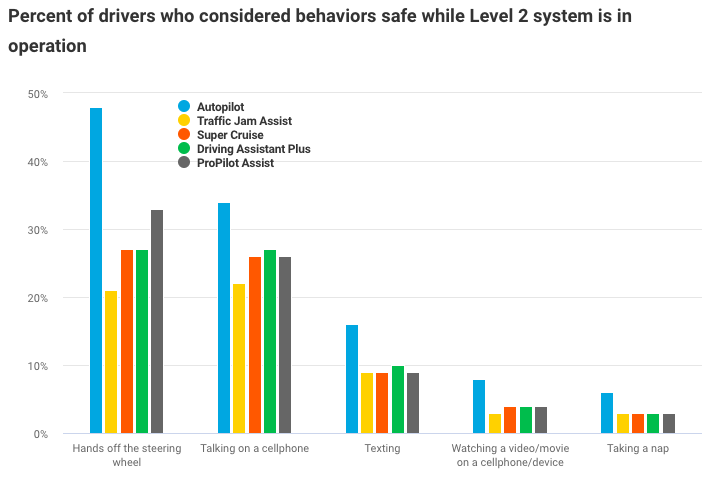
Does the name “Autopilot” cause people to overestimate the abilities of Tesla’s driver-assistance technology? It’s a question that comes up in the Ars comments almost every time we write about Autopilot.
Critics warn that some customers will assume something called “Autopilot” is fully self-driving. Tesla’s defenders counter by pointing out that autopilot capabilities in planes aren’t fully autonomous. Pilots still have to monitor their operation and intervene if they have a problem, and Tesla’s Autopilot system is no different.
A new survey from the Insurance Institute for Highway Safety brings some valuable hard data to this debate. The group asked drivers questions about the capabilities of five advanced driver-assistance systems (ADAS). They identified the products only by their brand name—”Autopilot,” “Traffic Jam Assist,” “Super Cruise,” etc. Survey participants were not told which carmaker made each product, and they did not learn the capabilities of the products. There were 2,000 total respondents, but each was asked about only two out of five systems, leading to a few hundred responses for each product.
For each ADAS system, drivers were asked about the safety of various activities that are not recommended by car manufacturers—from taking hands off the steering wheel to taking a nap. More participants believed it was safe to perform each of these behaviors with Autopilot than for any of the other four ADAS systems.
For example, 48 percent of drivers said that it was safe for a driver to take their hands off the wheel when Autopilot is active, compared with around 33 percent for ProPilot Assist and less than 30 percent for the other systems named. Six percent of drivers said it was safe to take a nap in a car with Autopilot, while only three percent said the same for other ADAS systems.
What's in a name?
To be clear, this survey focused on the perceptions of the Autopilot brand name, not anything about the actual technology. Respondents were not necessarily Tesla owners (presumably most were not), and they were not told anything about the capabilities of the cars they were answering questions about.
And while Autopilot might be more capable than some of these other systems, Tesla itself doesn’t claim drivers are safe to take their hands off the wheel when Autopilot is active, to say nothing of watching a movie or taking a nap.
What really matters for safety, of course, is how the actual owners of these vehicles behave. Tesla cars warn drivers to keep their hands on the wheel and their eyes on the road when Autopilot is activated. So probably a majority of Tesla owners are at least aware that Tesla doesn’t recommend hands-free driving.
Still, this is one data point supporting critics’ argument that the name “Autopilot” could sow customer confusion. A name like “Traffic Jam Assist” makes super-clear what the system is—and, more importantly, is not—designed to do, discouraging misbehavior even by people who don’t bother to read warnings carefully. A name like Autopilot subtly encourages people to overestimate the system’s capabilities.
Still, Tesla’s branding would matter less if the company had a robust system for monitoring drivers. Around 8 percent of people apparently believe it’s safe to watch a movie while driving with Autopilot engaged. However, it should be possible for a driver-facing camera to detect this kind of behavior and intervene, bringing the car to a gradual stop if the driver doesn’t keep his attention on the road.
Không có nhận xét nào:
Đăng nhận xét